Two years ago, my husband and I moved from Brooklyn to Jersey City, making the leap from renters to owners. As we visited apartments, I had one goal in mind: find a dining area with enough room for an eight-seater table. In the six years prior, we had space only for a second-hand, peeling Ikea situation with rounded edges, the chairs tucked completely under. No stretch of the table was longer than my arm. We still hosted guests often, but the table served as more of a dish repository; guests dined on the floor, around an awkwardly heighted coffee table. For the new apartment, I wanted a proper table.
After an exhaustive search, I settled on a former barn door, shipped from somewhere outside Chicago (fun anecdote: once it arrived, I discovered it was littered with shotgun holes. We use the “bottom” of the table as our dining surface). It fits eight comfortably, and up to thirteen uncomfortably.
Truth is, I’ve been collecting people around whatever surface was available for meals since college—it’s the best way I know how to celebrate. Whether you’re making dinner for friends, or tackling The Big Holiday Meal for the first time, the principles remain the same. Here are a few lessons I’ve learned along the way about feeding a crowd for any occasion.

Think Thematically
Whether you’re cooking for your partner, your family, or for a crowd, the question, “What in the whole wide world of all food options should I cook?” can be debilitating. Think about it like a writing prompt: a little direction helps eliminate writer’s block.
Pick a cuisine or season as a theme, and use that as a jumping off point. Recreate a restaurant dish, or cook only from one cookbook, or cookbook author. In the past few months, I’ve fashioned a “Steak House At Home,” but also “A Vegetarian Menu for a Friend Who Thinks Every Meal Needs Meat.” Once I have a motif in mind, I can get to researching. When planning the vegetarian dinner, I pulled just the cookbooks I knew to have stellar, center-of-the-table-worthy vegetable recipes. I mined previously tagged online recipes I knew would fit the bill. Once I had a collection of focused possibilities, planning the meal felt so much more manageable.
Similar methods can be employed if you have a central ingredient in mind. Maybe tomatoes just came into season. Maybe you plan to buy, or have been gifted, something luxurious that you finally have a good excuse to use, like that jar of imported caviar in your cupboard, or black peppercorns brought back in a friend’s suitcase from her vacation to Vietnam. Embrace said item, and make it your proud focal point.
Embrace the Season’s Greetings
If you have access to one, walk through a farmers market: Ask a farmer what’s new this week? What have you been cooking? What’s special, or will only be around a little while longer? Asking for advice is especially helpful in the cooler months, when your market might be more sparsely outfitted. They will know what to do with that novel new squash, or remind you how much flavor can be coaxed out of a humble onion.
Like most of us, I typically crave heartier, braised dishes in winter, and reach for watermelon in summer—but seeing (and sampling) what the market has to offer in a given week helps me a lot conceptually. A June strawberry (sweet, perfumed) calls for the simple tang of crème fraîche whipped cream. October’s concord grapes (jammy, earthy) will gem a one-bowl cake, fragrant with warming spices. Even if you don’t have easy access to a market, think about what you want to eat, based on the weather. Seasonal inspiration also comes from your favorite food magazines, or Instagram accounts.

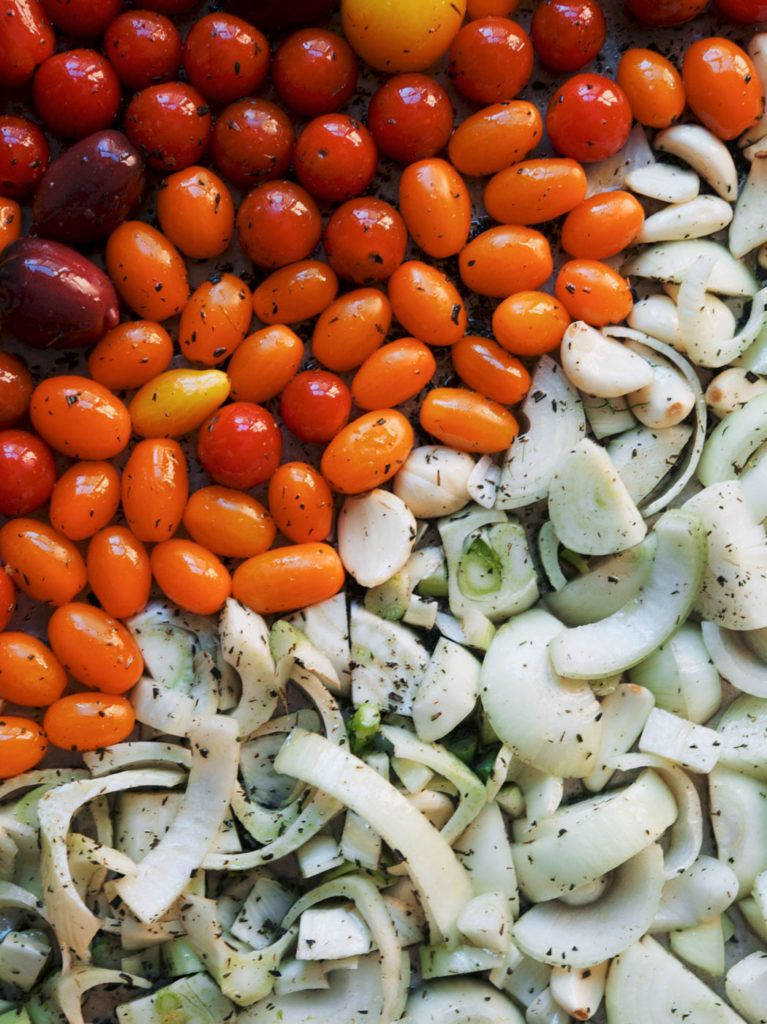
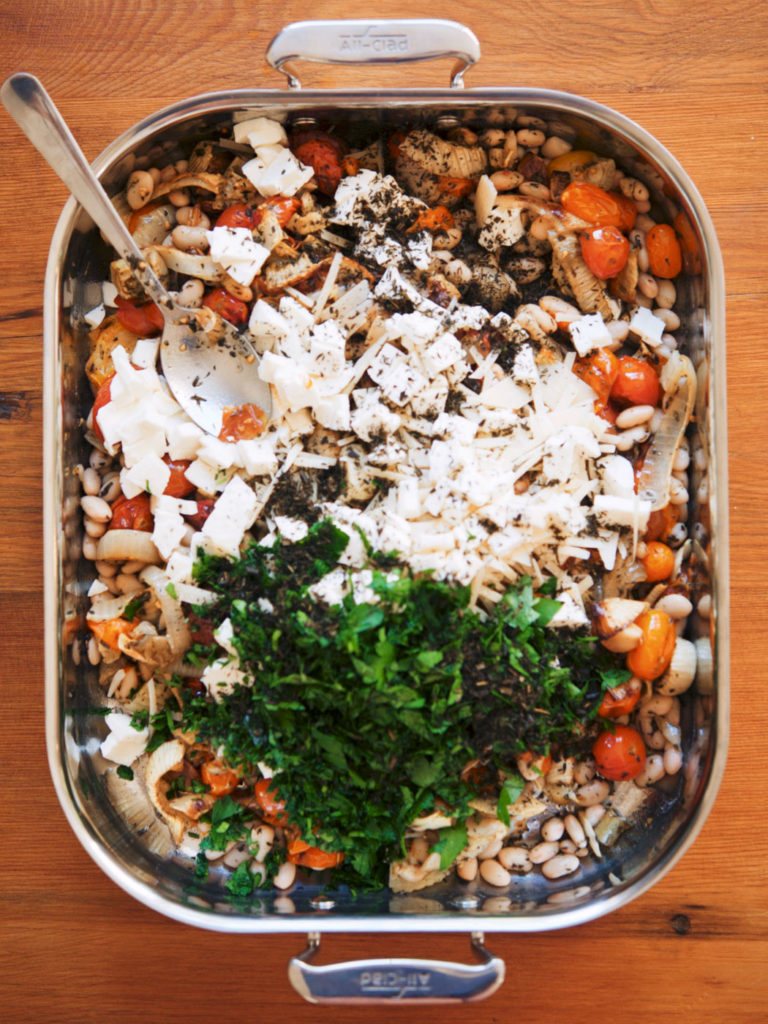
Believe in Balance
Once you have a direction, and likely more options than one person can reasonably cook for one meal, it’s time to consider balance. Texture and flavor are always my two biggest considerations (this book is a great resource). If I’m making a braised pork shoulder, I’ll have soft, rich, fatty and warm covered. I’ll need to counter: a salad of shaved apple and fennel with grassy olive oil, lemon and chopped parsley fits the bill; I know pork and apple are flavors that work well together, and the salad will be crunchy, light and acidic. As you eat first with your eyes, also consider color as well. That pork shoulder will be a uniform brown, so shower it with pomegranate seeds, or place it on a bed of lemon-dressed arugula.
And beyond the balance within a single dish, if you’re planning a multi-course situation, think about how each dish will play off of one another. If the evening opens with a rich, creamy soup, make sure the next course includes bright notes. If the menu is largely vegetable-centric and low-key, maybe now’s the time to pull out your show stopping Baked Alaska as a finale. Overall, you want people to leave the table feeling satiated, but never weighed down or fatigued.
It’s True; Timing Is Everything
The more guests you’ll be serving, the more important timing becomes—as anyone who’s ever cooked Thanksgiving well knows. My biggest piece of advice: do some organizational work up front. It’s a bit like studying for a test; the more you prepare ahead, the more inoculated you are against last minute jitters. I start with a blank page, onto which I write a meal’s courses. From there, I write out each recipe in my own shorthand (this sometimes happens on a computer, but in the heat of the moment, a computer is not water- or flour-proof!) Having my game plan on paper allows me the satisfaction of crossing things off as I complete each task.
After that, I time everything out in as much detail as possible (for an illustrated example of this process, see here, and scroll to the bottom of the page). The schedule usually starts a couple days out (salt the chicken, peel the carrots), and switches to an hour-by-hour breakdown the day of. Writing out such a schedule ensures I have my shopping list in order, but it also means I’m using my time efficiently. How many tasks can I tick off while the cake is in the oven? Most importantly, by the time I’m in the thick of it, I don’t have any thinking to do.
Mind the Workload (and Make Ahead)
The simple meaning here is—don’t overdo it. I really can’t emphasize this enough: a communal meal is supposed to be a happy confluence of friends, not a slog. It can be so easy to get carried away when you’re cooking for people you love, but when planning a meal, I consider how much can be made ahead. The best case scenario is: as much as humanly possible. Which foods can be held in a warm oven? Which dishes taste just as good at room temperature? And just as importantly, can I couple dishes that cook for about the same time, at the same temperature?
I try not to saddle myself with anything that necessitates à la minute cooking (because again, this is supposed to be fun, not stressful). I also try to plan an easy, not-too-filling snack for my guests in case I’m running behind. Think marinated olives or spiced nuts, not a cheese board. Finally, don’t be afraid to put your guests to work; they can build toasts for a starter, and can help clear and wash dishes at the end of the night.
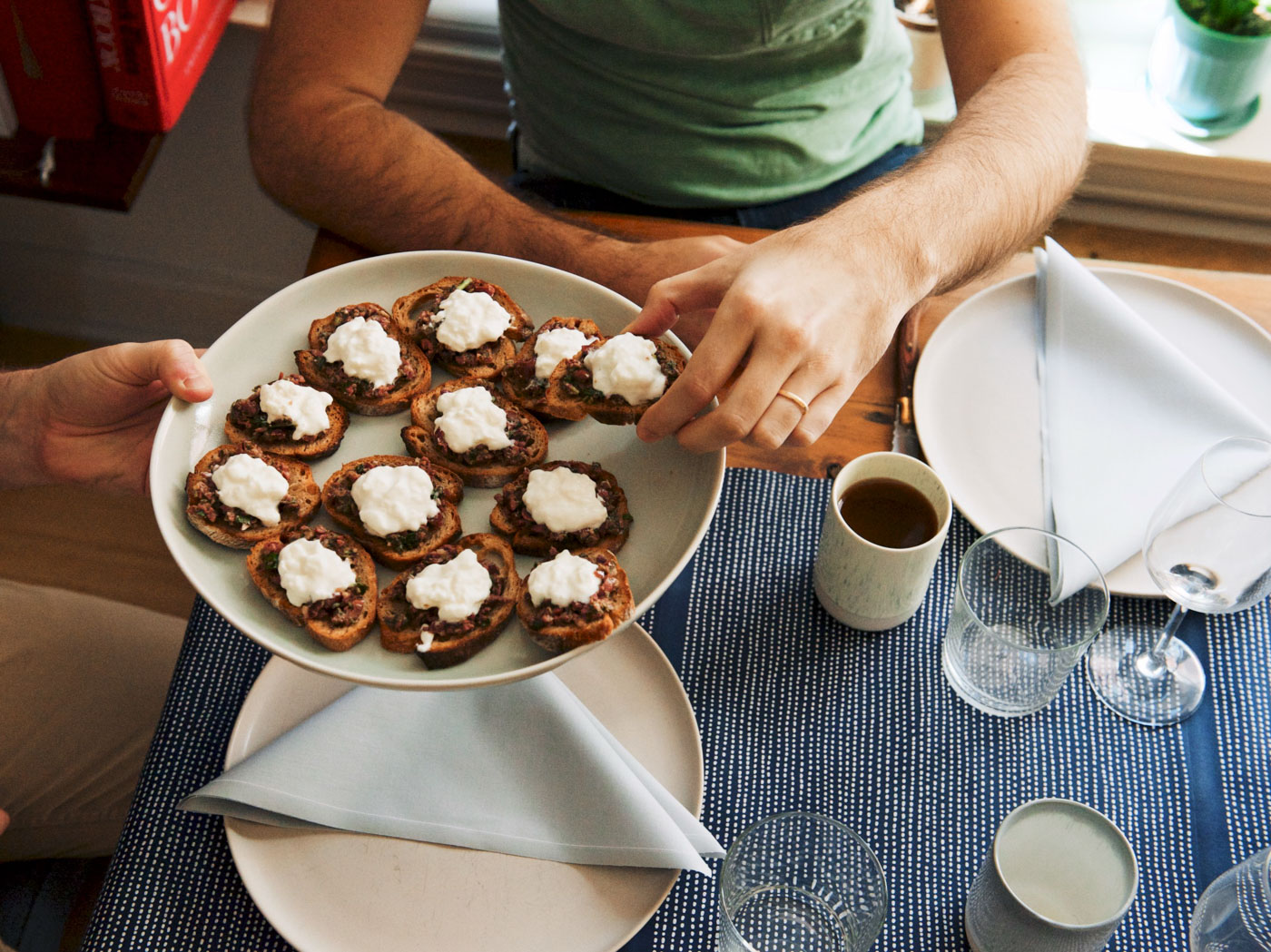
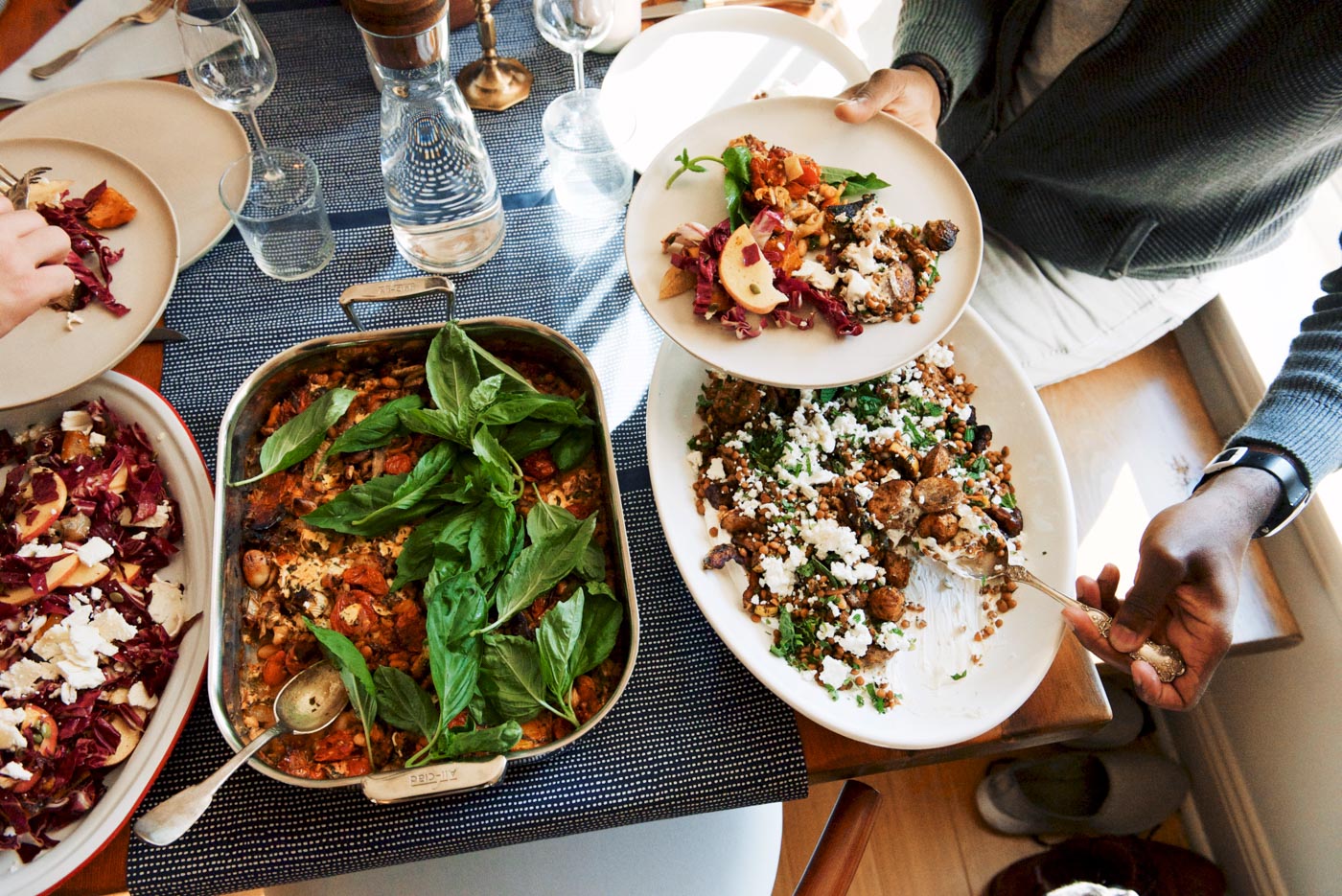
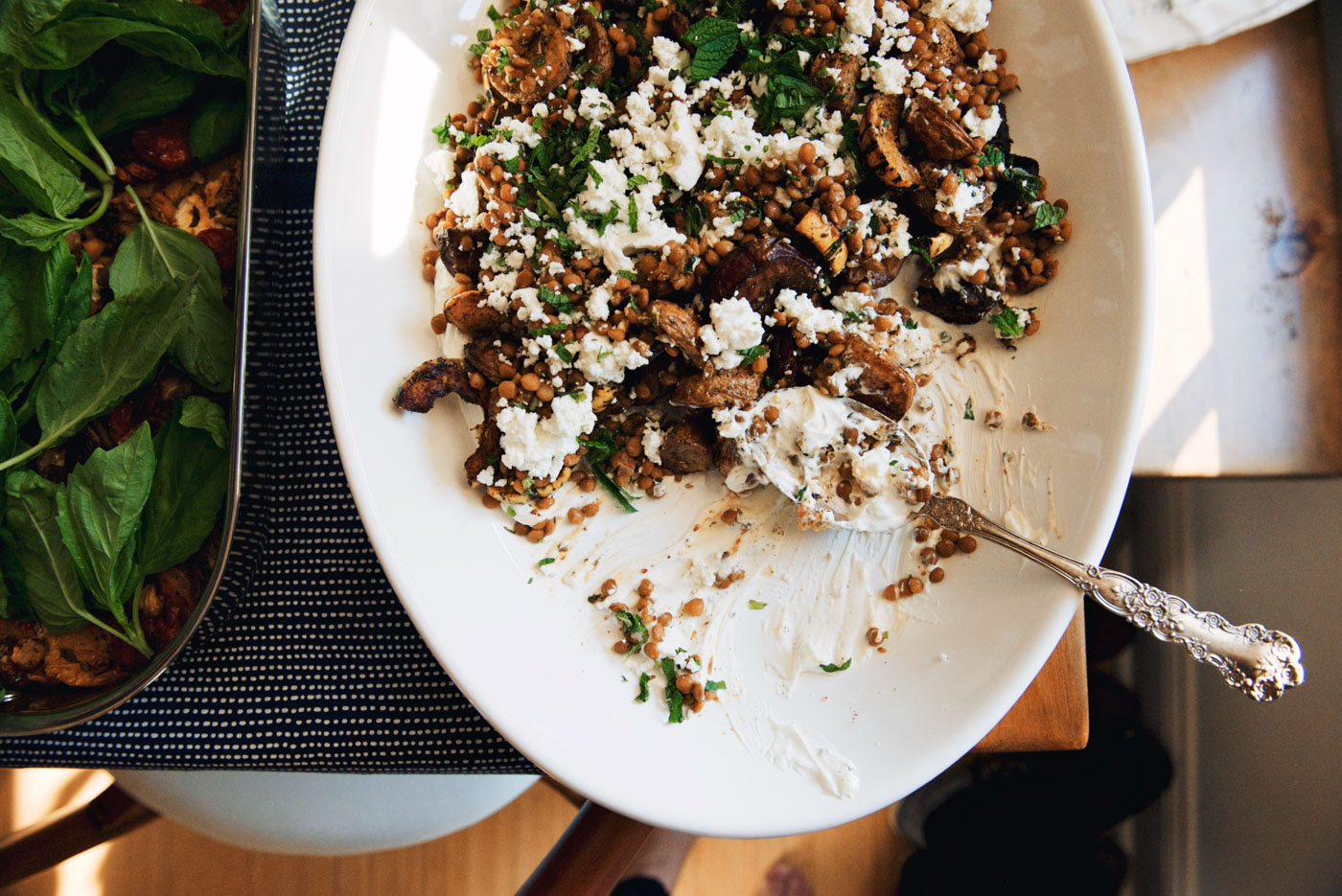
Give It a Good Look
Menu planning aside, a good party is often as much about vibe. Don’t be afraid to use the good stuff. We inherited silver from my French grandmother-in-law, China from my aunt, and etched wine glasses from a family friend. My feeling is, use it all. What’s the point of having lovely things if they never see the light of day?
On the other hand, many shops and online services sell fancy-looking paper/plastic/bamboo-ware. If you’re already cooking for a crowd, you can lighten your load by eliminating dishes (I’m crazy for this company, which sells beautiful, disposable linen napkins, runners and placemats).
Instead of tablecloths, which can be expensive or annoying to clean, try a runner instead. Rather than purchasing pricey flowers, pick up some branches from your local corner store. Cut them and place in small jars or vases of varying heights—so no one’s view across the table is blocked by a tall centerpiece. Invest in a pair of candlesticks. Tapers are inexpensive, come in nearly every color, and they have the ability to make the whole affair much more festive.
For service, I’m a big fan of family style; this way, you only have to “style” everything once, everyone can enjoy hot food (including you), and it fosters a sense of community at the table. This method works even when serving “fancy” foods—like homemade crudo or broiled oysters. Buy a couple of stylish serving dishes and bowls (which can often be found inexpensively at yard sales), and you’re good to go.
Finally, you don’t actually have to do a deep clean of your entire apartment before guests come over. This is what you should do though: clear a space for guests to stash their coats. Definitely clean the bathroom (a bonus move is to light a candle in there. It smells good, and casts the room in a flattering light). Vacuum where your guests will be. Also, always start the meal with an empty dishwasher. You’ll be thankful later.





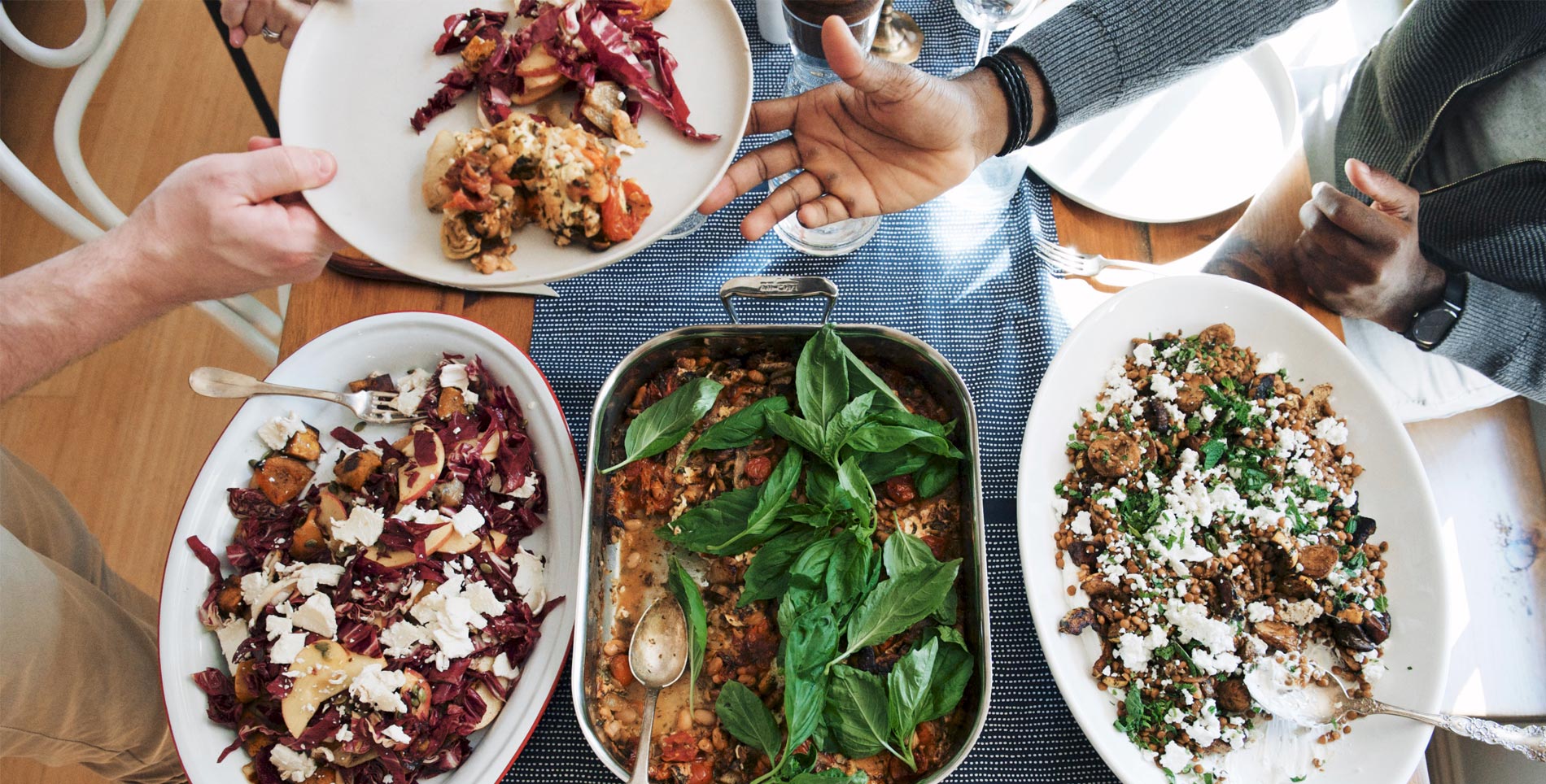

Our comments section is for members only.
Join today to gain exclusive access.